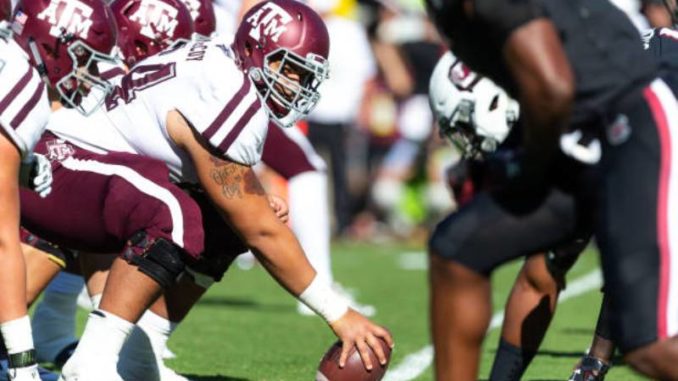
It wasn’t the most eventful NFL Draft for the New Orleans Saints, though how to best evaluate it may best come down to context.
The Saints entered the day with just one pick in the first three rounds, as result of a handful of moves made last season to strengthen a Super Bowl contending team during what’s likely to be its strongest point: whatever falls under the remainder of Drew Brees’ time here.
The plus of trading for veteran players is you get what you need from a known quantity immediately to plug the holes in your roster. The drawback is it subtracts from the number of opportunities to lock up young talent to below market contracts.
For New Orleans, it’s difficult to argue too vehemently against the team’s logic: its mix of players added up to a would be, should be Super Bowl berth, and for now I’ll leave it at that.
Still, each of the players traded for are set to remain on the roster for the coming season. So for this draft review, we can touch upon those veterans in conjunction with the newcomers.
Round 1: Selection traded in 2018 deal to land Marcus Davenport. When it comes to Davenport, I think we certainly saw a glimpse of the potential impact player he could be around the midpoint of last season. Analyst Brian Baldinger called him “an absolute monster.” With a freakish size/speed combination, it’s hard not to dream on the talented defensive end.
Even on a limited sample size, I think we can feel pretty good that a healthy Davenport can play at a high level in the NFL. But the question he has to answer is among the biggest facing every single young player entering the league: can “a healthy” Davenport be the norm? His rookie year was largely derailed by a toe injury that may have only cost him three games, but seemed to sap his effectiveness down the stretch.
Time will tell if the price to deal up for Davenport last season will prove worth it. Regardless, given the Saints’ current roster landscape, his progression into a strong starting player will be vital. Sheldon Rankins’ Achilles injury means another player on the line will almost certainly have to emerge as an impact performer, and he represents the best bet.
Round 2: The Saints select Nick McCoy, center from Texas A&M. Mickey Loomis pulled the trigger on a trade up here. The price was steep – a 2020 second rounder the key piece in landing the move — but understandable.
Much was made of the departure of Mark Ingram this offseason, but the team’s most impactful loss in my mind was center Max Unger, the leader of an offensive line that’s been one of the NFL’s very best —and cohesive — the past two seasons. Unger announced his departure late in the free agency stage, which left the Saints scrambling a bit before settling on signing C/G Nick Easton, formerly of the Vikings.
But Easton is coming off injury, and the decision to trade up for McCoy signifies to me that the Saints’ top priority was to maintain what I believe has become its offensive identity. While Brees, Alvin Kamara and Michael Thomas each garner deserved high praise, the Saints have emerged as a true contender over the past two seasons primarily because the team’s built an absolute terror up front on both the offensive and defensive lines. Losing Unger threatened to disrupt that; drafting McCoy, projected as one of the draft’s elite interior linemen, should keep that advantage strong.
Round 3: Selection traded for Teddy Bridgewater. Time will tell. If Brees misses even 2 or 3 starts and Bridgewater keeps the season alive, it’ll be hard to argue with the move. And if 2019 represents Brees’ last hurrah and Bridgewater sticks around long term, it was a move worth making.
Round 4: Initial selection traded for Eli Apple; 4th round pick acquired and used to select S/CB Chauncey Gardner-Johnson of Florida. I never argue with stockpiling defensive backs, and that goes double for the versatile ones. We know as Saints fans, if you happen to fall upon a cornerback well known for his strong play, like Marshon Lattimore, Keenan Lewis, Jabari Greer, Mike McKenzie or Tracy Porter, it’s a windfall.
We also know I just easily rattled off those five cornerback names because there aren’t many others among them in recent history; we’ll take anonymity from our defensive backs! Just don’t become infamous!
Apple wasn’t the strongest part of the secondary last season, but he did represent a big upgrade at outside corner across from Lattimore. He’s also a former top 15 draft pick, and still represents some upside after a full offseason with the team. As for Gardner-Johnson, he was one of the first selections of Day 3, a draft “faller” quickly gobbled up, which tells us the Saints likely had him ranked considerably higher before deciding to (again) trade up. We don’t need a star in round four, simply a quality player would suffice. If he wants to become a Greer or Lattimore, though, then fine, twist my arm.
Round 5: Pick traded to move up for Gardner-Johnson.
Round 6: Saquan Hampton, Rutgers, S
Round 7: Alize Mack, TE, Notre Dame; Kaden Ellliss, OLB, Idaho. These late picks can make a draft pop. Even landing a positive contributor on special teams is a nice haul, and a starter is a whopper of a choice. The odds are against it, but we see players defy the odds every season. Hopefully the Saints see at least one from this group among the breakthroughs.


Be the first to comment